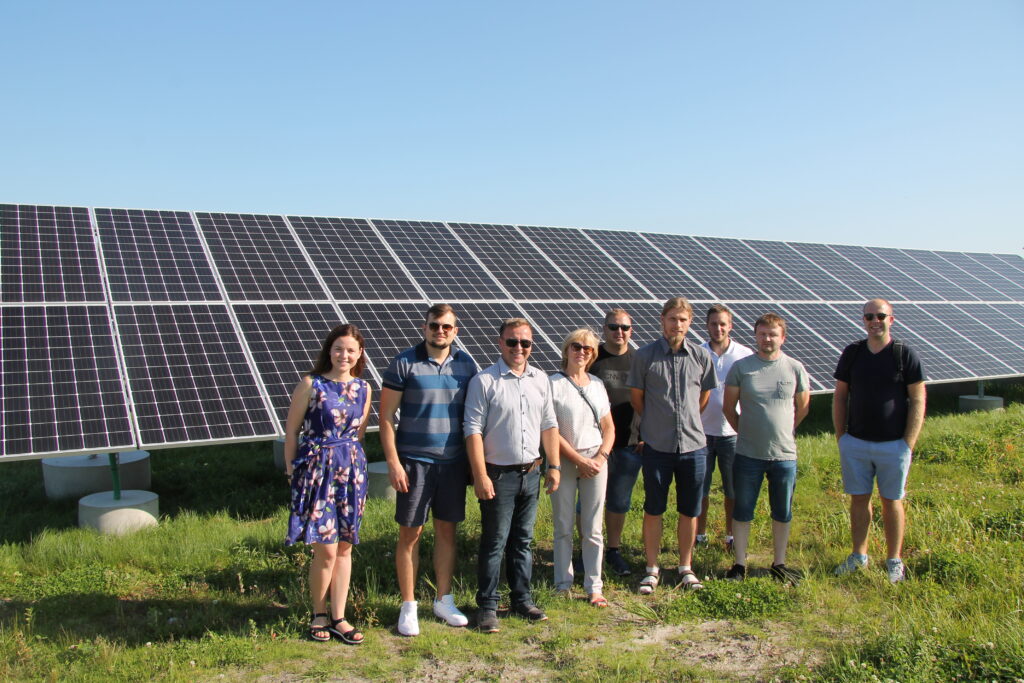In April this year, Vidzeme Planning Region invited Vidzeme municipalities to applybuildings for solar panel feasibility study. Nine municipalities (Ape, Alūksne, Burtnieki, Cēsis, Gulbene, Kocēni, Naukšēni, Smiltene and Valka) applied at least one of their object. In order to make the necessary calculations, the applied object had to meet several criteria – the building must be owned by the municipality; the smart electricity meter is installed and hourly data for 2018 is available; intensive use of the building during the summer period; a building inventory file is available; the building will be used for the same purposes as before and the roof of the building is technically suitable for solar panels.
Various municipal buildings were submitted for the evaluation – several preschool educational institutions, sports halls, boiler house, municipal administration building, social care center, sewage treatment plant, secondary school buildings. For some of the objects, municipal experts have developed Energy Action Plans in the framework of the project “Partnership for New Energy Leadership 2050 -PANEL 2050” implemented by Vidzeme Planning Region.
The Trapene social care center in Ape municipality has an Energy Action Plan and the building was also submitted for an evaluation of solar panels installation. Jurijs Ronimoiss, Head of the Spatial Development Unit of the Ape Municipality, says more about the building: “The Trapene Social Care Center is a municipal institution that operates continuously throughout the year. The clients of the institution need a continuous supply of energy seven days a week and 24 hours a day. Installing an efficient solar panel system could fully meet demand for electricity during the summer period and, if successful, even transfer some of the electricity back into the grid. The municipality is interested in improving the energy efficiency of the building, while preserving the environment and saving the municipal finances.“
The assessment of each of the proposed sites includes several scenarios, including the total power of the solar power plants, the number of solar panels and their total surface area, and the network inventory capacity. “For Latvia conditions to produce the highest amount of energy, it is essential to install solar panels at angle of 45 ° and oriented to the south. PV panel power must be balanced with building power load. At one of the sites, electricity consumption fell by as much as 60% during the summer months, but that’s when solar intensity is highest. For this building, solar panels with a minimum viewed power of 7.9 kWP would be unpaid over a period of 15 years. Solar panels can theoretically generate a certain amount of electricity, which solar panel dealers usually specify, but before installing, you need to evaluate the building’s hourly power consumption to see if the electricity will be consumed at optimum levels, “says Janis Ikaunieks, Vidzeme Planning Region Energy Efficiency Expert.
The evaluation of the cost-effectiveness of solar panel installation has been carried out within the framework of the Vidzeme Planning Region project “Effective Financing Tools for implementing Energy Efficiency in Buildings” (EFFECT4buildings) with the aim to test Prosumerism as financial tool for public buildings.
Further information: Jānis Ikaunieks, Energy Efficiency Expert in Vidzeme Planning Region, janis.ikaunieks@vidzeme.lv
Information prepared by: Baiba Šelkovska, Communication Manager in Vidzeme Planning Region, baiba.selkovska@vidzeme.lv, www.vidzeme.lv













